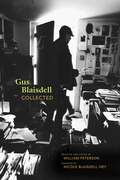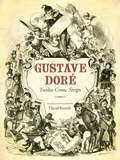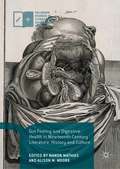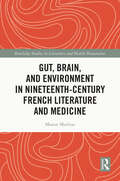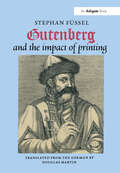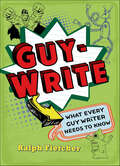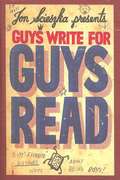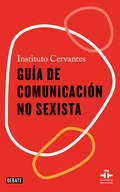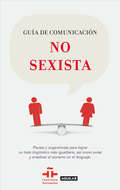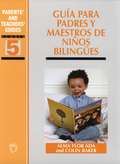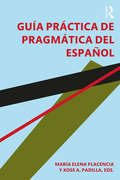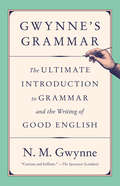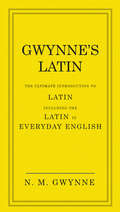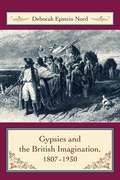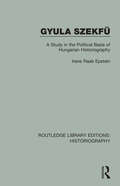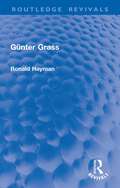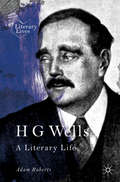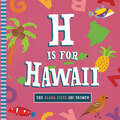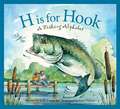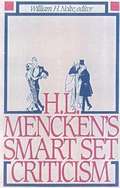- Table View
- List View
Gus Blaisdell Collected
by editors William Peterson and Nicole Blaisdell IveyFrom the moment he arrived in New Mexico in 1964, Gus Blaisdell (1935–2003) was a legendary presence. Famous in Albuquerque as a writer, teacher, publisher, editor, and especially as the proprietor of the Living Batch bookstore, Blaisdell was also a brilliant critic whose essays influenced readers throughout the country and across the Atlantic. This long-awaited collection of Blaisdell&’s critical writings includes essays on literature, art, and film, along with moving tributes by some of the distinguished writers who numbered Blaisdell among their friends. Introductory essays by philosopher Stanley Cavell and literary critic David Morris join colleague Ira Jaffe&’s poignant memoir to provide perspectives on the man by friends who knew him well. Glimpses of Blaisdell&’s vivid personality can be had from the many photographs included, and the diligently researched chronology compiled by Nicole Blaisdell Ivey tracks the course of her father&’s complicated life.
Gustave Doré: Twelve Comic Strips
by David KunzleAmong the masters of the nineteenth-century comic strip, Gustave Doré has been much neglected. For his illustrations to literary classics, he earned an unsurpassed reputation and corresponding scholarly attention. Doré himself repudiated his early work, and similarly critics and biographers have given short shrift to his beginnings as a caricaturist. These caricatures are herein rescued entirely for the first time in English by the renowned comics scholar David Kunzle. Doré's caricature is known to a few specialists, but virtually no one has pointed out that his mastery of the comic strip particularly marks him as an entirely original figure in the post-Töpffer era of revolutionary, mid-century France. Doré, remarkably, created these comic strips when he was between fifteen and twenty-two years old, for Charles Philipon's Journal pour Rire (The Laughter Journal), virtually dominating its seven-year (1848-55) history. He also did three fairly long, separately published albums, which show him at his very best. They are consistently funny, often ludicrous, and illustrate a graphic inventiveness unmatched until the twentieth century. In these graphic stories, Doré parodies an ancient fable, the discomforts of life in the country, the perils of artistic ambition, the absurdities of mountaineering and travel, as well as the antics of schoolboys. This book provides a context for Doré's caricatures, focusing on his comic strips in the Journal pour Rire, the character of the journal, and the three comic strip albums he created while he worked there. Kunzle's analysis reveals Doré's debts to his predecessors, Töpffer, Cham, and Nadar. None of Doré's Journal strips has ever been republished. Some of the albums were republished, reduced and incomplete, in German and French. This edition includes facsimiles of the twelve most significant comic strips and the first translation into English of the captions.
Gut Feeling and Digestive Health in Nineteenth-Century Literature, History and Culture (Palgrave Studies in Literature, Science and Medicine)
by Manon Mathias Alison M. MooreThis book considers the historical and cultural origins of the gut-brain relationship now evidenced in numerous scientific research fields. Bringing together eleven scholars with wide interdisciplinary expertise, the volume examines literal and metaphorical digestion in different spheres of nineteenth-century life. Digestive health is examined in three sections in relation to science, politics and literature during the period, focusing on Northern America, Europe and Australia. Using diverse methodologies, the essays demonstrate that the long nineteenth century was an important moment in the Western understanding and perception of the gastroenterological system and its relation to the mind in the sense of cognition, mental wellbeing, and the emotions. This collection explores how medical breakthroughs are often historically preceded by intuitive models imagined throughout a range of cultural productions.
Gut, Brain, and Environment in Nineteenth-Century French Literature and Medicine (Routledge Studies in Literature and Health Humanities)
by Manon MathiasGut, Brain, and Environment in Nineteenth-Century French Literature and Medicine offers a new way of conceptualizing food in literature: not as social or cultural symbol but as an agent within a network of relationships between body and mind and between humans and environment. By analysing gastrointestinal health in medical, literary, and philosophical texts, this volume rethinks the intersections between literature and health in the nineteenth century and triggers new debates about France’s relationship with food. Of relevance to scholars of literature and to historians and sociologists of science, food, and medicine, it will provide ideal reading for students of French Literature and Culture, History, Cultural Studies, and History of Science and Medicine, Literature and Science, Food Studies, and the Medical Humanities. Readers will be introduced to new ways of approaching digestion in this period and will gain appreciation of the powerful resources offered by nineteenth-century French writing in understanding the nature of connections between gut, mind, and environment and the impact of these connections on our status as human beings.
Gutenberg and the Impact of Printing
by Stephan FüsselFrom typefounding through typesetting to the printing process itself, this narrative offers a fresh look at the unprecedented success story of the spread of the 'black art' right across Europe in a mere 40 years. Stephan Füssel here analyses the first early printings, placing them in the context of the history of communication and the intellectual climate of a Europe-wide educated elite by about 1500. He foregrounds the tremendous rise in European culture and the history of education experienced as a direct result of this media revolution. In separate chapters Füssel depicts the fast spreading of the art of printing to Italy, France and England, at the same time highlighting the importance of the art of printing for the Roman Catholic Church, the Reformation, the University and the economy. From herbals to a guide for midwives, the present book shows popular instruction at work in the vernacular, as well as the consolidation of knowledge into encyclopedias in the early modern period, and the emergence of new forms of the prose novel and the beginnings of newspapers and periodicals. Finally Stephan Füssel traces the modern resonances of Gutenberg's invention, which persisted in virtually unchanged form for a further 350 years. It underwent decisive technological change through industrialisation and mechanisation in the nineteenth century, and again through digitalisation at the close of the twentieth century. However, as Füssel shows, the mass diffusion of information and the related communications revolution which began with Gutenberg continue unabated.
Guy-Write: What Every Guy Writer Needs to Know
by Ralph FletcherIt's no secret that many guys dread writing assignments. But writing doesn't have to be "boring nerd-work." Writing is about power; it's about fun; it's about spoofs, humor, sports, blood, farts, superheroes, giant monsters tearing down the city, and serious subjects, too. Ralph Fletcher, a guy writer himself and the author of forty-one books, discusses every tip needed to find the sweet spot in writing: the place where everything except the words stands still. With advice from favorite authors like Jon Scieszka, Jarrett Krosoczka, and Robert Lipsyte, this hands-on book will make a writer out of any guy.
Guys Write for Guys Read
by Jon ScieszkaThis fast-paced, high-energy collection of 92 short works features today's most popular writers and illustrators writing about what it means to be a guy. Contributors include Chris Crutcher, Stephen King, Matt Groening, Daniel Pinkwater, Neil Gaiman, and many more. Includes an all-new foreword by Jon Scieszka and an excerpt from Knucklehead.
Guía de comunicación no sexista
by Instituto CervantesNueva edición revisada y actualizada de una guía indispensable para lograr un trato lingüístico más igualitario y evitar el sexismo en el lenguaje «Las preguntas abiertas sobre el sexismo en los usos de un idioma son hoy algo que tiene que ver con la actualidad, con lo contemporáneo y con nuestro futuro. El Instituto Cervantes tomó conciencia de ello en 2011 y alentó la publicación de una Guía de comunicación no sexista. Establecer unas líneas de actuación que favorezcan la igualdad es uno de sus compromisos en la divulgación de las culturas españolas y en español. Un libro de este tipo no puede presentarse nunca como un manual o un manifiesto, sino como un conjunto de pautas y sugerencias experimentadas para lograr un trato lingüístico más igualitario, que visualice por igual a hombres y mujeres, así como para evitar y erradicar el sexismo del lenguaje. Para la institución que represento es imprescindible contar con esta guía porque forma parte decisiva de nuestra manera de pensar la cultura y de nuestras apuestas de futuro en favor de la libertad y la igualdad.» Luis García Montero, director del Instituto Cervantes
Guía de comunicación no sexista: Pautas y sugerencias para lograr un trato lingüístico más igualitario, así como evitar y erradicar el sexismo en el lenguaje
by Instituto CervantesPautas y sugerencias para lograr un trato lingüístico más igualitario, así como para evitar y erradicar el sexismo en el lenguaje. «Si lengua e ideología son ámbitos estrechamente relacionados, como los analistas críticos del discurso están poniendo de manifiesto, ha de aceptarse la capacidad de las lenguas para reflejar las ideas fundamentales de las colectividades que las hablan, así como para influir sobre ellas. La sociolingüística ha demostrado que el uso cotidiano de la lengua revela diferencias propiamente lingüísticas entre hombres y mujeres, y que éstas pueden funcionar como marcas de grupo que denotan percepciones sobre el género que responden en general a las conductas y los hábitos sociales de una época o una comunidad determinadas.El Instituto Cervantes, entidad destinada a la difusión de la lengua y la cultura, transmisora de una imagen de España y del mundo hispánico ligada al respeto y la tolerancia, no puede ser indiferente a los usos de la lengua española que reflejan y transmiten ideas o actitudes discriminatorias por razón de sexo o de género. Por eso ha elaborado con el apoyo del Instituto de la Mujer un plan de igualdad propio. Esta guía de comunicación no sexista pone a disposición de sus lectores la información necesaria para que su uso de la lengua española no refleje discriminación por razón de sexo o género. No es un reglamento ni un código ni una rígida norma y su voluntad no es otra que orientar, recomendar, presentar opciones, guiar el uso lingüístico, de forma que sea posible evitar o minimizar los elementos discriminatorios que, por desconocimiento o hábito, pudieran aparecer en la práctica comunicativa.»Carmen Caffarel, Directora del Instituto Cervantes «A partir de la Ley Orgánica para la Igualdad efectiva entre mujeres y hombres se reconoce explícitamente la necesidad de nombrar en femenino y en masculino. Esta obra es un buen ejemplo de cómo hacerlo.»Laura Seara Sobrado, Directora general del Instituto de la Mujer
Guía para padres y maestros de niños bilingües
by Alma Flor Ada Colin BakerThis is a practical introduction to bilingualism answering the questions most frequently asked by parents and teachers on raising and educating bilingual children. Both authors draw on their academic expertise and ample field experience to provide straightforward answers, which contemplate multiple types of bilingual families and diverse societal conditions.
Guía práctica de pragmática del español
by María Elena Placencia Xose A. PadillaGuía práctica de pragmática del español es un texto introductorio en español. Ofrece introducciones accesibles a una importante variedad de teorías y conceptos imprescindibles en el campo de la pragmática del español. El libro contiene 22 capítulos divididos en seis secciones que cubren: actos de habla, formas de tratamiento, cortesía y descortesía, comunicación y persuasión, discurso digital, metodología en pragmática. Los diferentes capítulos incluyen ejemplos tomados de la comunicación cara a cara y en línea, lecturas (recomendadas y complementarias), y preguntas y actividades que toman como punto de partida diferentes variedades del español y diferentes contextos sociales, culturales y/o políticos en el mundo hispanohablante. Constituye un recurso valioso para estudiantes de pragmática y lingüística hispánica, tanto hablantes nativos como estudiantes de español avanzado.
Gwynne's Grammar: The Ultimate Introduction to Grammar and the Writing of Good English
by N. M. GwynneAnxious about apostrophes? In a pickle over your pronouns and prepositions? Fear not--Mr. Gwynne is here with his wonderfully concise and highly enjoyable book of grammar. Within these pages, adults and children alike will find all they need to rediscover this lost science and sharpen up their skills. Mr. Gwynne believes that happiness depends at least partly on good grammar--and Mr. Gwynne is never wrong.From the Hardcover edition.dictated to be the right and the wrong. His teaching method is also defiantly old school: no one can follow a rule he hasn't committed to memory. But not all rules are equal. For a country whose only broadly subscribed guide to writing is Strunk and White, Mr. Gwynne performs a radical procedure. He presents its original seed: Strunk's 1918 essay, which E. B. White expanded. But neither form was ever meant as a guide to grammar, and so Mr. Gwynne presents only the kernel of Strunk's useful advice as a companion: a guide to putting words together nicely set within Gwynne's wisdom about putting them together correctly. The result is the last word on the subject anyone should need.
Gwynne's Latin: The Ultimate Introduction to Latin Including the Latin in Everyday English
by Nevile Gwynne‘Latin is "it", the most wonderful "thing". It is mind-enhancing, character-improving, enthralling, exciting, deeply satisfying, and valuable. My solid determination is to spare no pains to do it the justice that its importance demands.’Mr Gwynne, author of the Sunday Times bestselling phenomenon Gwynne’s Grammar, is just as emphatic about the importance of Latin as he is about the importance of grammar. From the novice to the more well-versed, Gwynne’s Latin is essential for anyone interested in learning Latin; Mr Gwynne promises to teach you more Latin in half an hour than you would learn from years of being taught Latin at school. He also includes a fascinating section on everyday Latin usage, which discusses all the Latin words and idioms we still use today, such as ‘quid pro quo’ and ‘sui generis’. Though we need no further convincing – as we know, Mr Gwynne is never wrong – here are just some of the many reasons why Latin is utterly wonderful:- Latin is an academic subject easy enough for the least intelligent of us to grasp all the basic elements of, and yet difficult enough to be demanding for its greatest scholars.- For well over a thousand years it was the means of communication that united the whole of Europe culturally and in every other significant way.- It is the direct ancestor of, between them, the five most widely-spoken European languages, and both of the official South American languages.- It is the ancestor and source of more than half of the English language, partly directly and partly through French, which for some centuries was England’s official language.Following in the same beautifully designed footsteps of Gwynne’s Grammar, Gwynne’s Latin will teach you all the fundamentals of Latin quickly, thoroughly and better than all the competition.
Gypsies and the British Imagination, 1807-1930
by Nord Deborah EpsteinDeborah Epstein Nord traces the nearly ubiquitous British preoccupation with Gypsies in imaginative works by John Clare, Walter Scott, William Wordsworth, George Eliot, Arthur Conan Doyle, and D. H. Lawrence.
Gypsies and the British Imagination, 1807-1930
by Deborah NordGypsies and the British Imagination, 1807-1930, is the first book to explore fully the British obsession with Gypsies throughout the nineteenth century and into the twentieth. Deborah Epstein Nord traces various representations of Gypsies in the works of such well-known British authors John Clare, Walter Scott, William Wordsworth, George Eliot, Arthur Conan Doyle, and D. H. Lawrence. Nord also exhumes lesser-known literary, ethnographic, and historical texts, exploring the fascinating histories of nomadic writer George Borrow, the Gypsy Lore Society, Dora Yates, and other rarely examined figures and institutions.Gypsies were both idealized and reviled by Victorian and early-twentieth-century Britons. Associated with primitive desires, lawlessness, cunning, and sexual excess, Gypsies were also objects of antiquarian, literary, and anthropological interest. As Nord demonstrates, British writers and artists drew on Gypsy characters and plots to redefine and reconstruct cultural and racial difference, national and personal identity, and the individual's relationship to social and sexual orthodoxies. Gypsies were long associated with pastoral conventions and, in the nineteenth century, came to stand in for the ancient British past. Using myths of switched babies, Gypsy kidnappings, and the Gypsies' murky origins, authors projected onto Gypsies their own desires to escape convention and their anxieties about the ambiguities of identity. The literary representations that Nord examines have their roots in the interplay between the notion of Gypsies as a separate, often despised race and the psychic or aesthetic desire to dissolve the boundary between English and Gypsy worlds. By the beginning of the twentieth century, she argues, romantic identification with Gypsies had hardened into caricature-a phenomenon reflected in D. H. Lawrence's The Virgin and the Gipsy-and thoroughly obscured the reality of Gypsy life and history.
Gyula Szekfü: A Study in the Political Basis of Hungarian Historiography (Routledge Library Editions: Historiography)
by Irene Raab EpsteinThis study explores the connection between politics and historical scholarship in the case of the Hungarian historian, Gyula Szekfü, whose career spanned one of the most significant and eventful periods of Hungarian history. His writing is particularly suited for an inquiry into the relationship between politics and historiography becasue the changes in Szefkü’s political and historical points of view parallelled the drastic changes which occurred in Hungary.
Günter Grass (Routledge Revivals)
by Ronald HaymanGünter Grass is one of the writers who grew up in a Germany already in the grip of Nazism. None of them has found better ways than his of translating the sordid history of the movement into fiction; none has looked more critically at the ‘denazification’ and reconstruction of Germany. In this important study, originally published in 1985, Ronald Hayman scrutinizes Grass’s development and assesses his achievement. He finds that Grass’s more recent work does not fulfil the promise of the The Tin Drum and his other early novels. While this study focuses mainly on the fiction, it also takes into account the poetry, plays, political writing, criticism and graphic work. Grass is important not only as an exemplar of the guilt-laden German conscience but as one of the most ambitious and accomplished living fabulists.
H G Wells: A Literary Life (Literary Lives)
by Adam RobertsThis is the first new complete literary biography of H G Wells for thirty years, and the first to encompass his entire career as a writer, from the science fiction of the 1890s through his fiction and non-fiction writing all the way up to his last publication in 1946. Adam Roberts provides a comprehensive reassessment of Wells’ importance as a novelist, short-story writer, a theorist of social prophecy and utopia, journalist and commentator, offering a nuanced portrait of the man who coined the phrases ‘atom bomb’, ‘League of Nations’ ‘the war to end war’ and ‘time machine’, who wrote the world’s first comprehensive global history and invented the idea of the tank. In these twenty-six chapters, Roberts covers the entirety of Wells’ life and discusses every book and short story he produced, delivering a complete vision of this enduring figure.
H Is for Hawaii
by Trish MadsonA is for aloha . . .B is for banyan trees . . .C is for coconuts . . .With E for elepaio, S for surfing, and W for Waikiki Beach, going from A to Z has never been more fun! Take an alphabetized field trip around the Aloha State and discover the plants, animals, foods, and places that make it, well, Hawaii!
H Is for Hawkeye: An Iowa Alphabet
by Patricia A. PierceThe letters of the alphabet are represented by words, set in short rhymes with additional information, relating to the state of Iowa.
H Is for Honor: A Military Family Alphabet
by Devin ScillianUsing the alphabet format, this picture book describes the many situations and experiences that military families, especially their children encounter. For example history, rank, and quarters are explained.
H Is for Hook: A Fishing Alphabet
by Judy YoungFrom A to Z all that is fishing is explained in this illustrated picture book using poetry and prose. Topics include angler, catch and release, fly-fishing, tackle, and more.
H Is for Hoosier: An Indiana Alphabet
by Cynthia Furlong ReynoldsAn Indiana alphabet book filled with rhymes and fun Indiana facts.
H. L. Mencken's Smart Set Criticism
by H. L. Mencken William H. NolteWelcome the long overdue re-release of Mencken's continual war against conventional thinking. A selection of Mencken's writings about other authors and their books.
